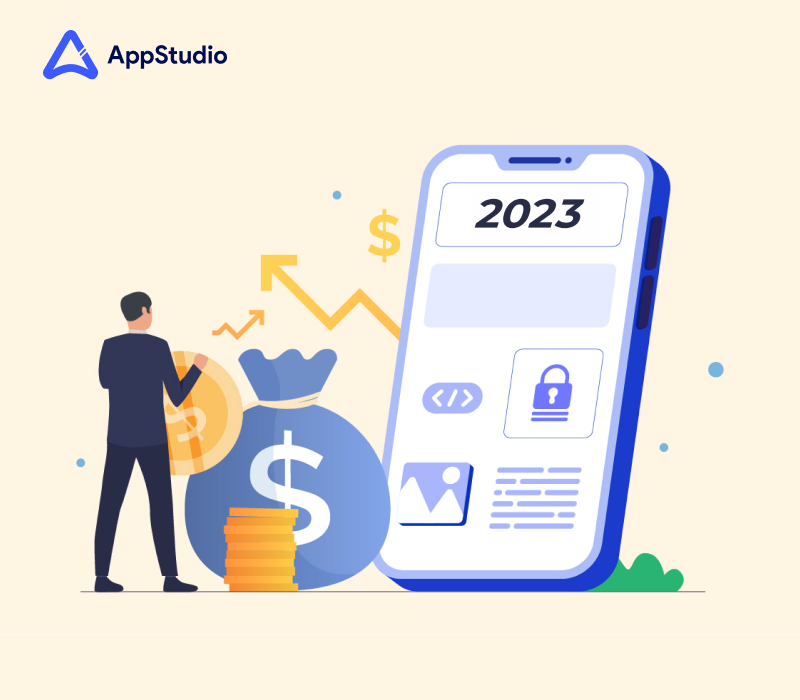If you are looking to have an application created for your business, you should make sure you are aware of the processes involved in the development of the application. In this article, we are going to discuss some of the best ways on how you can avoid paying unnecessary application development fees.
So, you own a business and need an application that is created specifically for your business? Or, are you someone who has an incredible idea for an application and you are sure it will work, but you lack the experience and time to hire and manage an internal development team?
The truth is that the development of custom mobile applications is often expensive and time-consuming, but if you have the budget, you do not need to stress and solve everything on your own. There are reputable application developers who can help turn your idea into a problem-solving and money-creation application that is built to fit your needs, your vision, and your budget, and it’s just a matter of choosing who I would trust for your project.
Manage and Document
We have seen a lot of business owners who do not have the technical ability to understand the application development process. Of course, they have finished validating their idea, auditing the competition and creating a strategy for its application, but even so, if they cannot clearly communicate how they imagined the application would be, then the development process can be extended and the cost of construction the application can reach the ceiling.
If you want to maximize your budget, make sure that your chosen team has the ability to deliver the application as you wish. There is no better way to do it than creating a detailed document that describes the requirements of the mobile application. This document should inform your chosen and future contractors about your objective for the application, the technical and product specifications, the design practices to be used, the functionalities and features, your monetization model, the technology to be used, the requirements of maintenance and updating, and many more. Be very clear with them and ask them in advance if there is something in that document that they cannot deliver, in this way, they will know what to expect and they can be vocal about the possible challenges they will have in the path.
Find an independent and reputable application developer or application development company
An external provider with a good reputation must have the experience and experience you need. They need to understand their goals and their business and put themselves in their place so they can build the application from their perspective. They should be able to guide you and answer all your queries about the development process of the application. If you need them, you should be able to provide a general description of the tasks involved for certain functionalities and features that you want to see in the application.
If you can, find a local company or a local application developer. You may be charged a little more, but this guarantees that you are protected through contracts and NDA. The language barrier and time zone differences could be overwhelming if you choose to hire foreign developers.
Before paying any fees, ask your contractors about their experience in creating an application similar to the one you intend them to build. Let them narrate some of the challenges they experienced and how they were able to overcome them. Their goal is to make sure that they can advance a further mile if things go wrong, and that they are flexible enough to meet their goals and deadlines without exceeding their budget. Research your organization and see what people say about them. Always remember that if you try to cut corners when choosing a developer you may end up having to pay more in the long term or worse, having to start from point one.
Good communication
If you want to make sure that the project is completed on time and within budget, you must communicate well with your contractor. The last thing I would want to happen is for the project to be extended because I was not available to provide comments or confirm the necessary changes. There is nothing worse than the developers who make the changes on their behalf because the project has already exceeded the deadline, but, unfortunately, they made an error and resulted in more work being needed. Be available to them in the same way you want them to be available to you.
Do quality control
Even if you have listed all the requirements, try registering from time to time and request an update from the developers. They should be proactive and should not cause difficulties when they request to see what has been done so far. It is also worth having someone who can verify if the tasks that are being carried out are necessary and correct.
For example, you are requesting an Android application to address a global audience. This could mean that developers will have to fragment the device to ensure that the application is compatible with all devices and versions of the operating system. Tasks like this can affect the cost of the project because they require a lot of time. Having someone who can explain what work is involved in each phase of the application development can reassure you and also relieve the stress of developers.
Prepare for the costs of testing and maintenance
Business owners who have not developed an application for them in the past may think that once the application has been developed, there will be no costs other than the server fees. The truth is that testing, maintenance, and future updates can still cost a lot of money, so it’s best to prepare and reserve a part of your full application development budget or have a separate budget for these processes. You may not be able to choose the necessary updates because your application needs to adapt to changing environments.
It is also worth noting that a comprehensive approach (designing and developing an application that supports as many platforms as possible) is very costly to maintain. Having an application designed for your company can bring many benefits in terms of brand, customer experience, business operations, sales, and even customer support. Having the right mindset and the right strategy in place can save you unnecessary expenses and stress.
If you are a developer, then keep in mind the following tricks:
Design first, build later
Before writing any code, have a good sense of what the plan is for the application. Try to outline the workflows and interfaces of the application at the beginning of the design process. Sketching is an incredibly cheap and easy way to iron the initial design of an application and capture its needs.
Produce as many sketches as necessary, and explore the design options with the interested parties in the application as part of an interactive process, while incurring few initial costs of developing mobile applications. Be sure to define directions and discard dead ends. At this point, there is no need to achieve a high-fidelity representation of the final interface.
If the freehand drawing sounds intimidating, the device templates provide a structure to work within. Interface Sketch offers a free set of downloadable stencil templates for desktop and mobile platforms.
Focus on the important
Developers and companies that are new to mobile application development often try to imitate desktop software or fill their applications with features that they think are great, but have little to do with the main objectives of the application.
When building a mobile application, minimize the functionality and include only those functions that are in line with the main objectives of the application. The less complicated the application, the less the overall cost of developing mobile applications. It is better to build an application with fewer functions that work well against one with many features that are mediocre, at best.
Consider adopting the minimum viable product (MVP) approach. MVP products include limited functionality, but they have enough to meet the main objectives of the application. Teams can add more features in later versions, if necessary. By doing so, the product is launched sooner, saving time and money along the way.
Organizations must fully understand how users will be using the application to avoid incurring the kind of “feature swelling” that can sabotage any development effort.
Think of a cross-platform development
A mobile application project must be able to orient itself to multiple mobile platforms and device types while minimizing the development effort necessary to implement those different versions.
First, find out exactly what devices the application must support-iOS, Android or Windows-then determine whether to deliver a native, hybrid or HTML5-based web application. Native applications tend to perform better and offer functionality more efficiently than hybrid or web applications. They are also the most expensive to develop and maintain. Web applications are the cheapest to develop because they can run on any device with an HTML5 browser, but tend to be the least efficient of the three options.
Multi-platform development occurs when a web application is developed. Regardless of the development tools used, incorporate responsive design into the application. Although cross-platform frameworks are often associated only with hybrid applications, some frameworks support native development.
Do not reinvent the wheel
Professional developers are clearly not the only ones creating applications today, and it’s easy to find prebuilt templates, third-party add-ons, or integration adapters for back-end systems. Any of these tools can help facilitate the development process, and subsequently lower the total cost of ownership (TCO).
Leveraging existing technologies can be particularly useful when it comes to testing automation; testing a framework helps produce a better product, and saves time and money. Also consider a rapid mobile application development tool (RMAD) from companies such as Kony, Mendix or Out Systems. With RMAD, anyone can create applications using drag-and-drop operations to add different types of functionality, without writing any code, which can help reduce the cost of developing long-term mobile applications.
Economical applications do not have to be cheap
Keep in mind that many components, tools, and services come with subscription or license fees, which can add up quickly and lead to a higher TCO in the long term. Even open-source mobile application development products come with hidden costs.
Carry out a careful cost analysis before deciding on any development technology, but do not refuse to use them. The right technologies can help keep the cost of mobile application development low, by a significant amount.
And do not forget the users; not taking into account their needs can lead to a failed application, which can be one of the most costly mistakes of all.






